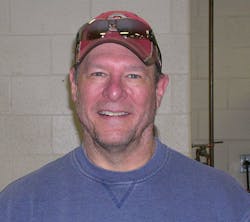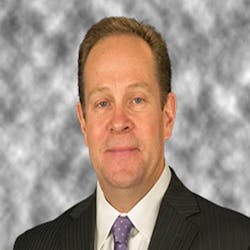As a safety professional, your role is to develop, implement and oversee the safety programs within your company. You are also responsible for the most important thing in your company: the employees, along with their health and well-being.
You have a real impact on the quality of people’s lives. Think about it. At the end of the day, when everybody’s headlights are pointed toward the gate, what condition will they be headed home in? How will they feel? What will their attitudes be? You play a very important role in determining those outcomes. That makes you a very important person.
Embrace your role as a powerful leader by learning how to use the secret ingredient to achieve safety excellence.
Off the Shelf Safety Programs
There’s no shortage of ideas on how to improve safety culture. There are conferences dedicated to safety; books about best practices and other techniques to improve safety; and numerous companies that sell safety programs.
For many companies, a prepackaged or canned safety program is attractive. It sounds so simple. You buy the program. You teach the people in your organization to use said program. Maybe you bring in an outside trainer to help you implement it. Then, you sit back and hope it works.
Unfortunately, with these canned safety programs, it is difficult to establish ownership. Instead of your employees owning the new safety program, they become renters. People approach renting something differently than if they own it.
Think about the last time you rented a car. How many times did you hand wash and wax that rental car? Did you even clean out the car before you returned it? We can’t expect employees to approach safety programs that are foisted upon them any differently.
Canned safety programs are not inherently bad. In fact, there are many high quality canned safety programs and techniques available on the market. But without employee buy-in or ownership, your program will not achieve the results that you seek: zero accidents and injuries. Without ownership, your new safety program at best becomes the flavor of the week, at least until another crisis or executive’s pet project takes priority.
However, there is a way to approach safety that can lead to lasting improvements that can work for every organization. It is the key to achieving safety excellence and the glue that will hold all your safety efforts and existing safety programs together. This secret ingredient transforms workers from renters to owners of their safety culture.
The Secret Ingredient
I can’t speak for all safety professionals, but it seems that safety leaders often crave the support of their top-level executives. Some believe that if leadership advocates for safety, all their safety problems would be solved. They think that having the company executives out front and leading the program is the secret ingredient to success.
In my experience, top-level leadership is part of the recipe, but it is not the secret ingredient. Some people believe the secret ingredient is involvement. They say we need to involve everybody: supervisors, frontline workers and everyone in the back office, too.
But what exactly is involvement? Involvement makes it sound like we have a very small part to play, and we wait around to be told what to. In my opinion, that sounds passive because no one is taking ownership of either the problem or the solution.
Involvement is important. So is commitment. But neither are the secret ingredient that elevates a safety program from good to great.
The Award-Winning Recipe
Before I reveal the secret ingredient of safety excellence, I need to first introduce you to some people who make the recipe successful.
Gator the Mechanic
Gator is a gruff, straight shooting, no-nonsense mechanic at one of the largest industrial facilities of its kind in the U.S. (His real name is Brad Miller.) At first, he disagreed with just about every element of our safety program. He went toe to toe with the safety leaders about zero accidents being impossible and about discipline for safety violations.
We sent Gator to a safety conference to learn more about a specific safety program. I don’t know the entire story of what happened at that conference, but now Gator carries the flag for safety. What’s more, the plant he works at is an OSHA Voluntary Protection Program site that carries the Star Status, symbolizing it is the best of the best in safety.
In his role as a mechanic, Gator does not have formal authority in the organization, but he has tremendous influence. He knows that he did not change safety at that plant by himself. He also does not wait around until he is given some fancy title to act. He leads at his current level.
Gator is still a mechanic, but he is also a leader in his union. Gator is far from the only employee who displays leadership qualities in the organization.
Randy the Operator
Meet Randy Bickford. Randy was an operator at what could be considered one of our worst performing plants. It was not a happy or safe place to work, nor was it productive.
Randy led from the trenches. He was one operator in a large power plant. We didn’t give him a big title. We didn’t give him formal authority over other people. We didn’t give him staff members to formally oversee, but he still made a difference in that plant’s safety program.
The plant improved thanks to Randy and a bunch of hard-working and committed people. In fact, the plant went from worst to first in safety and has thrice won the CEO Safety Award, an internal award our chief executive bestows to one location each year. (If your company doesn’t already have such an award program, you should consider establishing one.) The plant’s awards and track record are evidence the workers accomplished that feat, and they continue to make improvements.
Randy knows that he did not change safety at that plant by himself, but he did not wait around until the time was right or he had formal authority to make it happen.
Robin the Safety Leader
Meet Robin Seele. Robin does have a formal safety title, some formal authority, staff to oversee and a lot of influence. Robin took an existing safety program that was good and made it excellent. He has an excellent safety program today because he added the secret ingredient.
That’s because Robin knows that it wasn’t only his leadership, and he didn’t accomplish anything alone. Organizational and culture change requires many people with a common vision all pulling in the same direction.
Upper Management’s Role
Our top brass was certainly involved in each of these plant’s safety transformations. However, the top leaders really became committed after we had these and other people leading at all levels of the company.
That’s because it’s easy for leaders to get on board once they see evidence of success. Great leaders know that vision is critical but standing behind people already doing the work is equally important.
The momentum grew organically. One leader after another became committed to safety, and it was evident by their actions. Safety became the thing that united our efforts and, in a way, became our noble purpose.
Real safety leaders at all levels in the organization ensure success because it means that there is buy-in and ownership of safety, which is crucial for getting organizational change off the ground. A top-down approach from leaders who may not understand the impact of those edicts can never have the same level of success as a grassroots or bottom-up approach.
The Secret Ingredient
When Gator committed to being present for safety every day and encouraged others to get on board, he became part of the secret ingredient. Likewise, when Randy influenced others to follow his lead to create a safe work environment, he became part of the secret ingredient. And when Robin listened to advice from experts and used his formal authority to implement new safety measures, he also became part of the secret ingredient.
Are you ready for the secret ingredient? It’s committed leaders at all levels.
You can perfect your own recipe for safety excellence by developing leaders at every level. The secret ingredient is not necessarily rare. In fact, it doesn’t necessarily cost a lot, but it does require many people being willing to try new things and an expert who can successfully find the right combination and balance.
I guarantee that you already have the raw ingredients at your workplace. You have people like Gator, Randy, and Robin in your organization right now. Your job is to find them, engage them and empower them. The best way that I know to find those safety leaders is to give them some responsibility.
You don’t need to give them a fancy new title or promotion. In fact, I don’t recommend this because you will be moving them out of the very environment they need to be in to be effective. However, you do need to give them a platform and opportunities to demonstrate their value to others, especially to upper management. You also need to invest in them and commit to their success, such as through informal or formal training. Give them some skin in the game, and they’ll surprise you with what they will do. They are the glue that will hold your program together.
Conclusion
Gator, Randy and Robin represent true safety leadership because they lead at the level in which they each work. They do what they can to improve safety where they are. Moreover, they are humble about their accomplishments and their much-deserved recognition for creating a safer workplace.
There are many more people at the company who I did not mention, but they have also made important contributions to the workplace. I find that looking at every worker as a safety leader allows me to see the potential in each conversation you have, brochure you produce, and training you conduct to recruit and cultivate more talent on your team.
After all, leadership is what you do—not the position or title that you hold. Once you realize that, you’ve unlocked the secret ingredient to safety excellence. Now, you can see the unlimited possibilities, rather than barriers, for success.
Doug Sterbenz coaches and speaks to organizations about how to reach their safety and leadership goals. He is also the author of the book Must Be Present to Win. Previously, Doug served as COO and executive vice president of Westar Energy. While working at Westar Energy (now Evergy), the company was named one of America’s Safest Companies of 2014. Doug was named EHS Today’s one of 50 people who most influenced Safety in America in 2015-2015.
About the Author
Doug Sterbenz
Doug Sterbenz is founder of Present to Win, LLC, where he speaks to organizations on how to reach their safety and leadership goals. Previously, Doug served as COO and executive vice president of Westar Energy. While working at Westar Energy (now Evergy), the company was named one of America’s Safest Companies of 2014. Doug was named EHS Today’s one of 50 people who most influenced Safety in America in 2015-2015.



